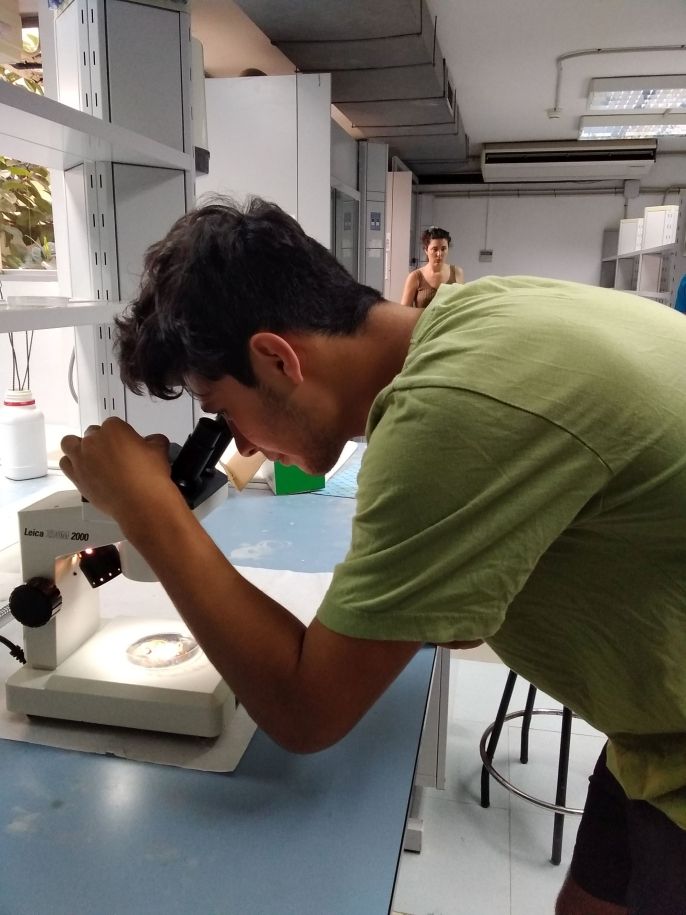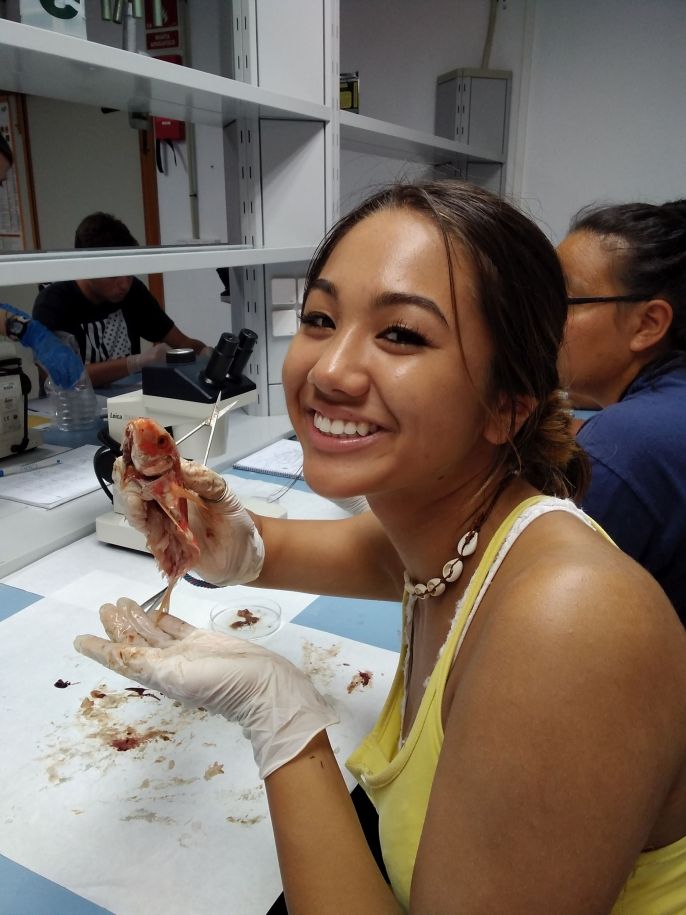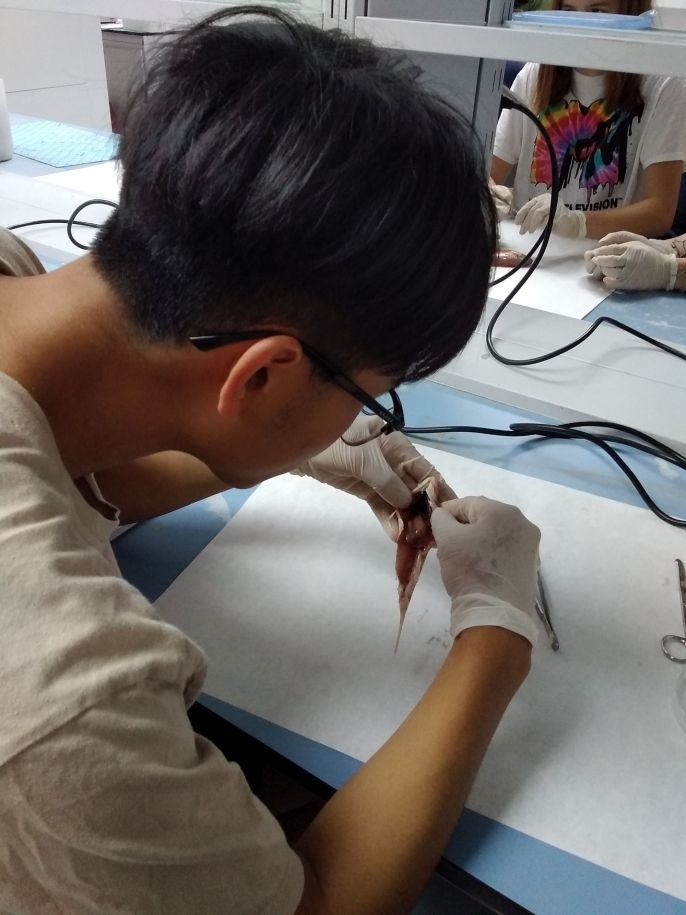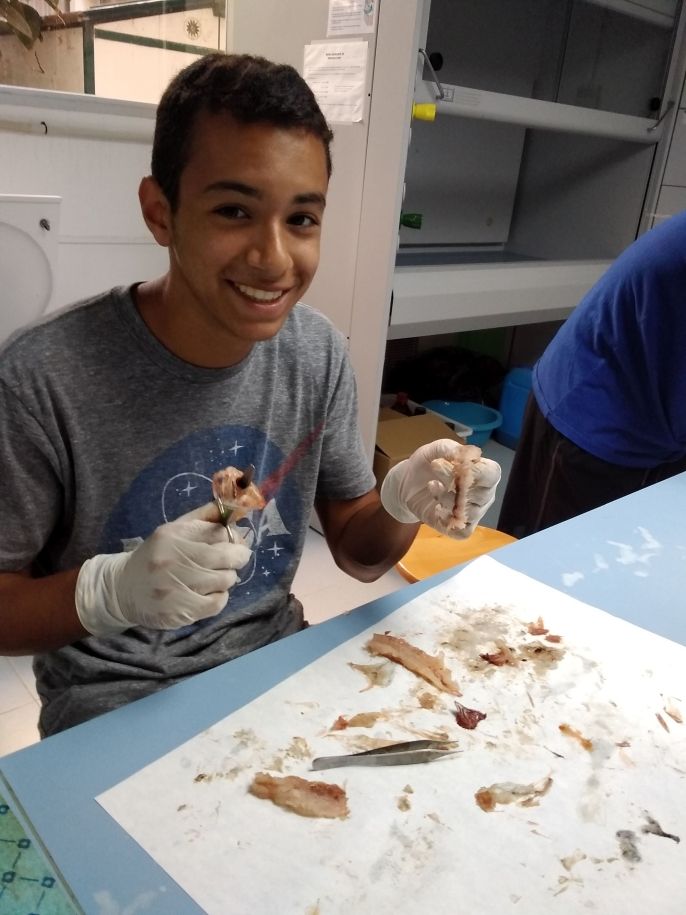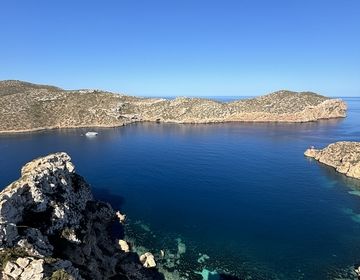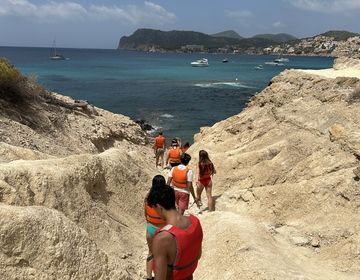Plastic Pollution and Anatomy Lab
This week, the students learned about micro and macroplastic pollution. They spent the previous day collecting samples of spheroids, which are balls of dead sea grass, from the beach. Today, they got microscopes and dissected the spheroids.

Their objective was to identify if any micro or macroplastics were present. Impressively, very few micro plastics were found, indicating the cleanliness of the beach where they were collected from.
Next, Carme, the instructor, showed the students how to dissect a red mullus. She started by identifying the different organs of the fish and how to carefully extract them. Then, it was the students turn! Not all were enthusiastic about dissecting the fish, but they all tried their best.

Some students were even able to observe living parasites, called anisaki. Alton found the anisaki pictured below in the intestines of the red mullus.

This lab gave the students the opportunity to experience the kinds of investigations that researchers carry out in the laboratory. Some are even looking forward to a career in research!
Related Posts
A Day of Discovery: Exploring Cabrera
On Wednesday, July 24th, our Marine Ecosystems and Sustainability program participants embarked on an unforgettable excursion to the island of Cabrera, a pristine gem off the east coast of Mallorca... keep reading
A Day at Cala Romana
We’re excited to share what an amazing day we had here in Palma de Mallorca! Today was all about discovering the wonders of Cala Romana, a beautiful coastal gem that... keep reading
Alcudia Adventures!
This week, our CIEE students embarked on an unforgettable journey to Alcudia. The adventure began with a double-decker bus ride, stopping at the Parc natural de sa’albufera for a unique... keep reading
